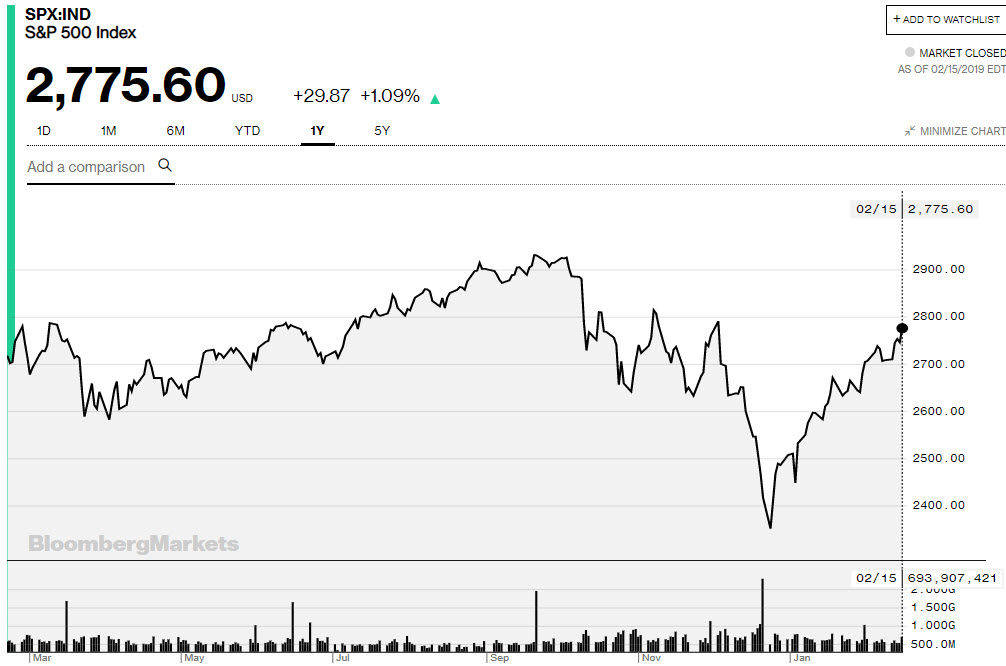The last few years have been characterized by considerable volatility in the stock and bond markets around the world, causing quite a few investors to panic, insomnia and even to sell securities from their portfolio. Historically, this was proved to be wrong, and only those who make rational decisions will see satisfying results in the long term.
US stock indexes fell more than 10% four times over the course of 2018. The increased volatility is caused mainly by the enormous amount of information that is published daily about the economy and companies in the market combined with the speed at which investors can respond to events by trading through mobile phones. To this one can add the algorithmic trading companies, who often respond disproportionately to events in the world, and you understand why the volatility is so high these days.
Naturally, many investors who are exposed to media reports of panic in the markets, or who look at the value of their portfolio shrinking suddenly, tend to panic and act quickly to protect their savings. Is such a hasty sale in order to protect yourself against further declines, indeed succeed in protecting your money? In most cases the answer is NO.
The reason is that after the sharp drops come the increases that fix them, and this happens within a short period of time without the possibility to schedule the exit or entry points at the right time. Even in 2018, all the time the stock market fell sharply, stocks corrected back to the same spot within a few days. An interesting study conducted by Fidelity in Britain in 2014 showed that the best performing portfolios were actually those of deceased people, because their heirs did not make any changes after their relatives died, even when the market dropped or rose substantially. This is further evidence that long-term perseverance is a necessary condition for a successful investment over time.

The S&P 500, which has fallen 20% from the peak, has already corrected most of the declines in January and February alone. Those who escaped from the market in the middle of the falls lost money and missed the fast rally of the last two months.
Persistence in investing without selling may sound simple, but it’s not; to succeed in it you must prepare accordingly. Here are a few tips to help you build and maintain a rational investment strategy over many years.
Choose the right composition of stocks and bonds for your portfolio
Proper distribution of money in the portfolio between stocks and bonds (something called asset allocation) is one of the most important things to overcome the volatility of the capital market. Stocks are known to be more volatile than bonds, so if you think you might panic at volatility, choose a more conservative portfolio with a larger bond component. The average US investor allocates 30% of his portfolio to shares and 70% to bonds, so that is the asset allocation that may be suitable for most of you as well. Once a year, check the composition of the portfolio and if needed re-balance it to the original asset allocation.
Do not put all the eggs in one basket
We all make investment mistakes sometimes when choosing securities for our portfolio and have to sell them at a loss. In order to limit the damage to the entire portfolio, it is recommended to keep your portfolio diversified enough. Thus, distribute our money between a number of shares from different industries, different countries, etc. It is important to understand that over-diversification will reduce the contribution of the winning stocks, so you do not have to spread it too much. An effective stock portfolio will contain between 10-20 stocks, no more and no less.
Choose one strategy and use it for many years
Did you choose to follow leading indices through ETFs? Excellent, there’s no reason to switch to other ETFs just because of negative headlines in the media or because of a short-term trend around a particular sector. Have you found an investment guru you trust? Keep track of his advices for as long as possible and don’t transfer to a new guru. Frequent switching between investment strategies will hurt your return.
Don’t fall for “magic solutions” that you see online
The internet is full of tempting offers for quick profits in the capital market like day trading, foreign currency trading (FOREX), technical analysis, binary options, leveraged transactions and more. If it’s so attractive, why are people willing to teach them for few dollars? And where are all those who have become millionaires by implementing these techniques? They don’t exist. When something sounds too good to be true, it’s probably really unrealistic. Stay away from it and stick with rational long-term value investing approaches.
Learn how to invest yourself
The best investment manager for your money is you. When you choose stocks or bonds for the portfolio yourself, you are very familiar with the company you invest in and are convinced that its securities are traded at an attractive price, which will help you hold your investments over the years and succeed even in periods of market declines. There are countless online sites, textbooks and investment courses that you can learn how to analyze companies and how to find attractive investment ideas for your portfolio. It is worth the effort.
The most successful investors are those who invest continuously in the long term. Just as you should not enter the capital market with the expectation of quick profits, you should not run away from it because of temporary declines. Choose the investment strategy that works for you, stay with it for the long-term, and you will see a satisfying results over the years.


Be the first to comment on "The cure for volatility in the stock market: A guide to the frightened investor"